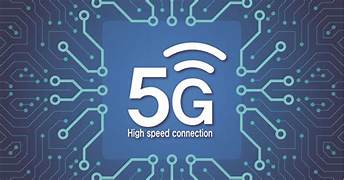What is 5G Wireless Technology and How it Works?
The fifth generation of wireless technology, commonly known as 5G, represents a revolutionary leap in mobile communication. It is the successor to 4G LTE and promises to transform the way we connect, communicate, and interact with technology. With its unprecedented speed, low latency, and capacity to connect millions of devices, 5G is poised to be a cornerstone of future innovation, enabling technologies such as autonomous vehicles, smart cities, and advanced healthcare systems.
In this article, we will explore the fundamentals of 5G wireless technology, its technical components, and its transformative potential across industries.
What is 5G?
5G is the latest iteration of mobile network technology. It is designed to deliver faster internet speeds, higher data transfer rates, and enhanced network reliability compared to its predecessors. The three primary goals of 5G are:
- Enhanced Mobile Broadband (eMBB): Significantly faster download and upload speeds for streaming, gaming, and other bandwidth-intensive applications.
- Ultra-Reliable Low Latency Communication (URLLC): Near-instantaneous communication for critical applications like remote surgery and autonomous driving.
- Massive Machine-Type Communication (mMTC): The ability to connect a vast number of devices simultaneously, supporting the Internet of Things (IoT) and smart systems.
How Does 5G Work?
5G relies on advanced technologies and a new infrastructure to deliver its capabilities. Below are its key components:
1. Spectrum Utilization
5G operates across three frequency bands, each serving different purposes:
- Low Band: Covers large areas with moderate speeds. It is ideal for rural and suburban connectivity.
- Mid Band: Balances speed and coverage, making it suitable for urban areas.
- High Band (Millimeter Wave or mmWave): Offers ultra-fast speeds but with limited coverage. It is ideal for densely populated areas like stadiums and city centers.
2. Massive MIMO (Multiple Input, Multiple Output)
Massive MIMO technology uses multiple antennas at base stations to transmit and receive data simultaneously. This enhances network capacity and ensures efficient data handling, especially in crowded areas.
3. Beamforming
Beamforming is a signal processing technique that directs wireless signals precisely toward specific devices. This improves signal quality and reduces interference, making 5G connections faster and more reliable.
4. Network Slicing
5G networks can be divided into “slices,” each tailored to specific use cases. For example, one slice might prioritize low latency for autonomous vehicles, while another focuses on high bandwidth for streaming services.
5. Edge Computing
5G integrates with edge computing to process data closer to the source, reducing latency. This is essential for applications requiring real-time responses, such as augmented reality (AR) and virtual reality (VR).
6. Small Cells
Small cells are miniature base stations that support high-frequency signals. They are deployed densely in urban areas to enhance coverage and capacity.
Advantages of 5G
5G brings a host of benefits that distinguish it from previous generations of wireless technology:
- Speed: 5G can deliver speeds up to 10 Gbps, enabling seamless streaming of 4K/8K video, fast downloads, and smooth gaming experiences.
- Low Latency: With latency as low as 1 millisecond, 5G is ideal for applications requiring real-time responses, such as telemedicine and industrial automation.
- High Capacity: 5G can connect up to a million devices per square kilometer, supporting smart cities, IoT devices, and more.
- Energy Efficiency: 5G networks are designed to consume less energy per transmitted bit, making them more sustainable than previous networks.
- Improved Reliability: 5G ensures stable connections even in high-density environments, such as concerts or sports events.
Applications of 5G Technology
1. Healthcare
5G enables telemedicine, remote surgeries, and real-time monitoring of patients through wearable devices. Doctors can use VR/AR tools powered by 5G for advanced diagnostics and treatments.
2. Autonomous Vehicles
Self-driving cars rely on 5G’s low latency to communicate with other vehicles, traffic lights, and road sensors in real time, enhancing safety and efficiency.
3. Smart Cities
5G supports IoT devices that manage energy, water, waste, and traffic in smart cities. It facilitates real-time data analysis for efficient urban planning.
4. Entertainment and Gaming
5G allows for immersive gaming experiences through AR and VR, along with buffer-free streaming of high-definition content.
5. Industrial Automation
Factories use 5G to connect robots, sensors, and machines, optimizing manufacturing processes and reducing downtime.
6. Agriculture
Smart farming solutions, such as drones and sensors, use 5G to monitor soil health, weather conditions, and crop growth, improving agricultural efficiency.
Challenges and Limitations of 5G
Despite its potential, 5G faces several hurdles:
1. Infrastructure Requirements
Deploying 5G requires a dense network of base stations and small cells, which can be costly and time-consuming.
2. Spectrum Availability
The availability of high-frequency spectrum is limited, and licensing can be expensive.
3. Device Compatibility
Not all devices are compatible with 5G, necessitating upgrades for users.
4. Security Concerns
With more devices connected to the network, 5G increases the risk of cyberattacks. Enhanced security measures are needed to protect sensitive data.
5. Health and Environmental Concerns
Some individuals worry about the potential health impacts of 5G radiation and the environmental cost of deploying the infrastructure.
The Global Rollout of 5G
Countries worldwide are racing to implement 5G networks, with varying degrees of progress:
- United States: Leading in mmWave deployments for urban areas.
- China: Investing heavily in infrastructure, with millions of base stations already operational.
- Europe: Focusing on mid-band deployments to balance speed and coverage.
- India: Recently launched 5G services, aiming for nationwide coverage within a few years.
Future of 5G
The journey of 5G is just beginning. As technology evolves, its potential applications will expand further:
- 6G Evolution: Research into 6G technology is already underway, promising even faster speeds and smarter networks.
- AI Integration: AI will optimize 5G networks, enabling dynamic resource allocation and improved performance.
- Global Connectivity: 5G could bridge the digital divide by bringing high-speed internet to remote areas.
Conclusion
5G wireless technology is not just an incremental improvement over its predecessors; it is a transformative force reshaping industries and redefining connectivity. By offering unparalleled speed, capacity, and reliability, 5G is poised to unlock a future where smart cities, autonomous vehicles, and remote healthcare are a reality.
However, realizing this potential requires addressing challenges such as infrastructure costs, security concerns, and equitable access. As governments, businesses, and researchers work together to overcome these barriers, 5G will continue to drive innovation and usher in a new era of technological advancement.


